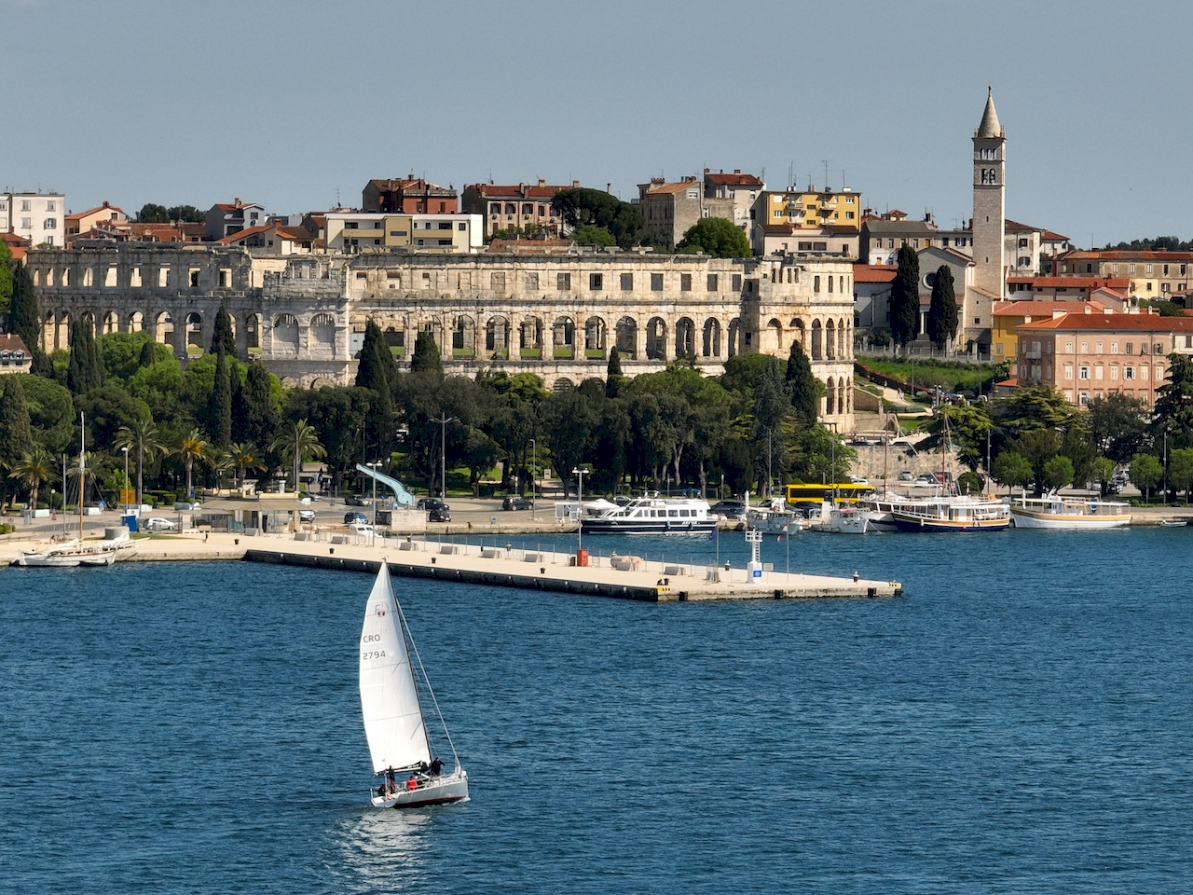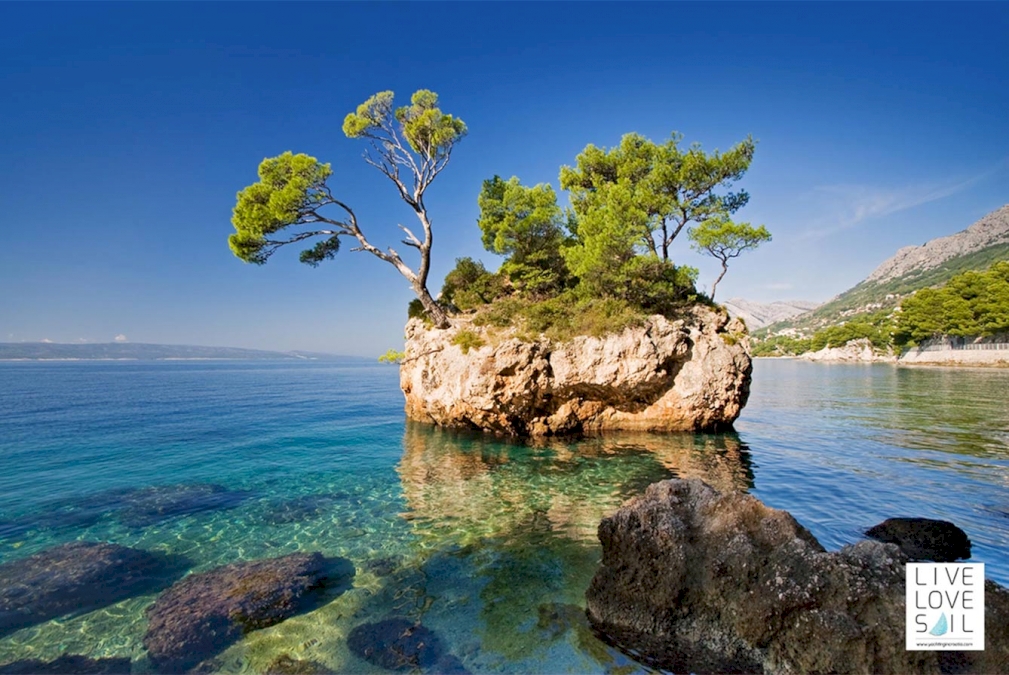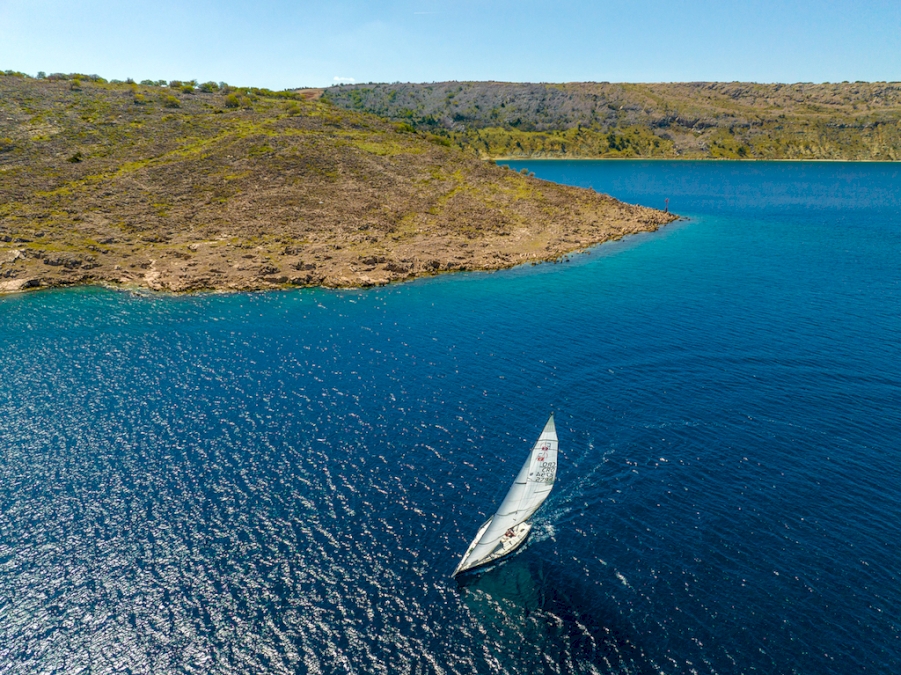Croatia boasts four sailing regions, each offering unique coastlines and culinary diversity based on its terrain. For example, Croatia’s northern coast, or Istria and Kvarner, is home to sandy beaches, truffles, world-class olive oil, and Brijuni National Park. On the other hand, the Kornati Archipelago is an oasis of 140 islands, islets, and reefs, known as a nautical paradise for sailors who can whip through the archipelago’s uninhabited islands while experiencing the magic of Telašića Nature Park.
Arguably The most popular sailing region in Croatia is Central Dalmatia, which features the internationally-known cities of Split and Trogir. The glamorous Hvar Island is showcased on the covers of the world’s most prominent yachting magazines, while Brač Island’s Zlatni Rat beach is one of Croatia’s most recognized symbols. And did we mention that the Blue Cave on Biševo Island near Vis rivals that of Capri?
Just a bit further down the coast is Southern Dalmatia, known best for the illustrious Dubrovnik. However, just north of the famous walled city are the Elafiti Islands archipelago, while Croatia’s greenest island Mljet stands proudly with its national park and saltwater lakes. And we can’t forget that the island of Korčula is the alleged birthplace of Venetian merchant and explorer Marco Polo!
But that is just part of what sailing in Croatia entails.
History + UNESCO heritage
The Croatian coast is a pearl of the Adriatic in and of itself, but when you factor in its cultural heritage and vibrant history, Croatia’s charm is taken to the next level. Lucky for sailors, much of Croatia’s UNESCO heritage decorates the coastline, allowing you to quickly delve into antiquity from your sailboat.
Šibenik, for example, is the only town in Croatia and one of five in the world that boasts two UNESCO heritage sites. The museum town of Trogir, Split and Diocletian’s Palace, and of course, Dubrovnik and its distinguished defensive walls are some of the more famous world heritage sites, but what you may not know is that the island of Hvar is the only island in the world that has 6 UNESCO heritage protections!
From the Greeks to the Romans, Illyrians to the Venetians, and Austro-Hungarians to the Yugoslavians, Croatia’s spirited past is never far no matter where on the Adriatic you are. This makes it a dream for sailors looking to build their knowledge beyond the sails.
Mediterranean diet + local cuisine
It is no wonder why UNESCO has protected Mediterranean cuisine on the islands of Hvar and Brač. However, these two islands only scratch the surface of the Adriatic’s culinary prowess.
Age-old recipes have been passed down by Croatian grandmothers for generations, a commonplace practice that has given birth to some of the country’s trademark delicacies. With seafood mainly in focus on the coast, a standout meat dish called ‘peka’ (lamb or veal prepared ‘under the bell’) is best enjoyed on a small Dalmatian island only reachable by boat. This is where the genuine hospitality of the islanders really shines, as homemade wine and olive oil are likely paired with your plate, along with local sing-along songs and an old-school family flair you’ll be hard-pressed to find elsewhere.
Adriatic winds
One aspect of sailing in Croatia that makes it a cut above the rest is that you’ll rendezvous with a handful of Adriatic winds, all of which are important for you to know about at sea.
First up is the infamous (but beloved) bura, a chilly and gusty northeastern wind that hails from the Velebit mountains. While it is more forceful in the winter than summer, the bura is known as the ‘cleansing’ wind - not only does it clear your head, but it clears the sky back to blue, too! However, sailors caught in the bura at sea should beware, as hurricane-like gusts are not uncommon.
Another rather unfriendly wind is the temperamental southerly jugo. This wind not only messes with your mood but most often brings dreadful weather and dangerously large swells. While it ultimately allows for great sailing, it is best attempted by experienced sailors that can read the sea to achieve high speeds.
And if you make it through the bura and jugo, you’ll be rewarded with Croatia’s most pleasant sailing wind, or ‘the good wind’ - maestral. This northwesterly wind gradually builds its speed throughout the day, reaching its peak in the afternoon hours before winding down as the sun sets.
These three winds hardly make up half of what you may encounter while sailing in Croatia. But, one thing is for sure - Croatia’s windy coast is a win for professional and recreational sailors alike!
Mediterranean Climate
The Croatian coast has a Mediterranean climate, which means that the summers are sunny, hot, and dry, and the winters are mostly mild but wet. Croatia’s hottest months tend to be its busiest tourism months - July and August, with temperatures pushing past 30 degrees Celsius. However, Croatia’s preseason and postseason are known to offer slightly cooler but far more comfortable temperatures - and that is, without the peak-season crowds at sea.
But why should Croatia’s climate be a deciding factor for sailors? For starters, boaters are likely guaranteed sunshine no matter the time of year on Croatia’s two sunniest islands - Hvar and Korčula, raking in over 2,700 sunshine hours annually! And that’s just one perk.
Sea temperatures are also reason enough to sail Croatia’s coast. The average ranges between 15-18 degrees Celsius in April, May, and November, and from 22 to 25 degrees Celcius from June to September.
Sailors, however, should be aware of adverse weather on the Adriatic from time to time, which is summed up by locals as ‘nevera,’ or a strong and sudden storm that never lasts too long. The downside is that you’ll need to dock somewhere safe for an hour or so, and the upside is that you can carry on sailing as soon as it passes.
No better place to learn sailing
Croatia’s sailing history can be traced back to Illyrian ships and Roman galleys, though its most recent traditions are attributed to the 19th century when the first sailing clubs on the coast came to fruition. Today, Croatia is an international leader in nautical tourism and home to some of the world’s best sailors, like 470 class Olympic gold medalists Šime Fantela and Igor Marenić, or 2x Olympic silver medalist in the Laser class, Tonči Stipanović.
Croatia’s celebrated maritime history and vibrant sailing traditions are only part of its appeal. The Adriatic’s sometimes unexpected meteorological conditions, coupled with a diverse seascape that displays a maze of populated and uninhabited islands, shallow and sandy bays, bottomless coves and vivid caves, and often rocky sea bottoms compel you to learn several maneuvering methods and degrees of sailing skill.
Overall, Sailing in Croatia extends beyond learning how to tackle life on board - it’s about exploring historic towns, embracing local customs, and unearthing a maritime heritage that flourishes with each Adriatic breeze in your sails.


